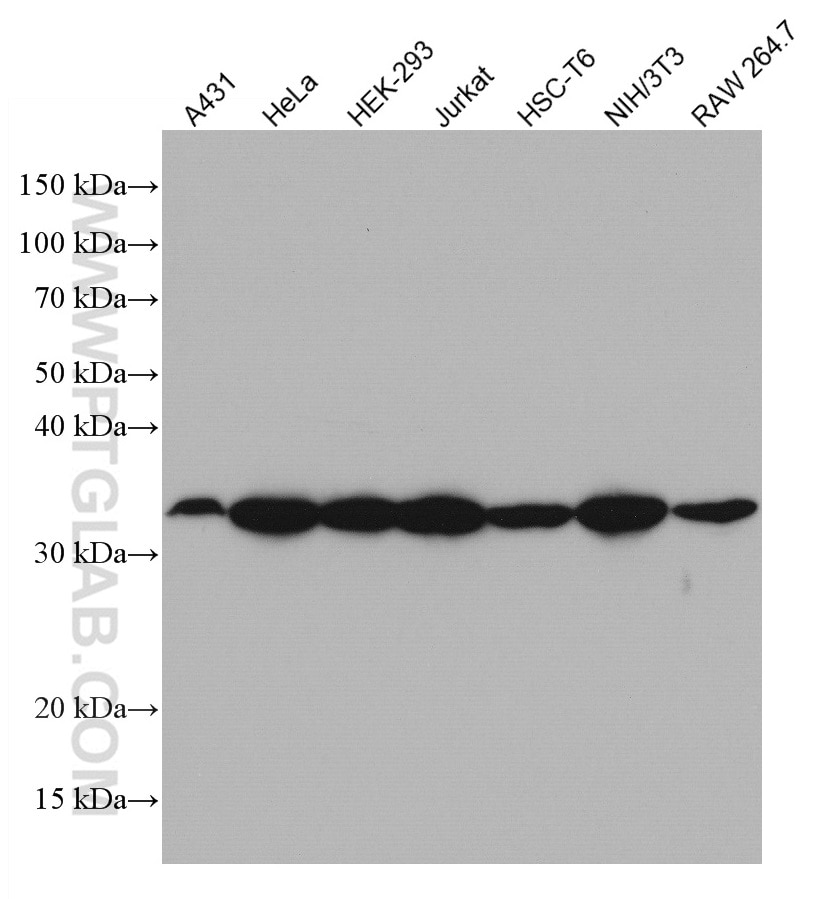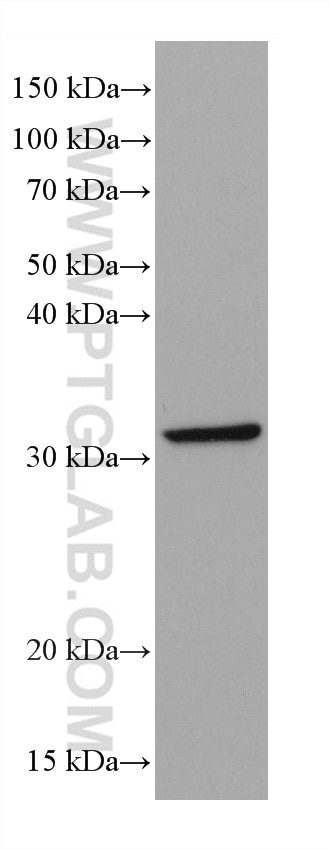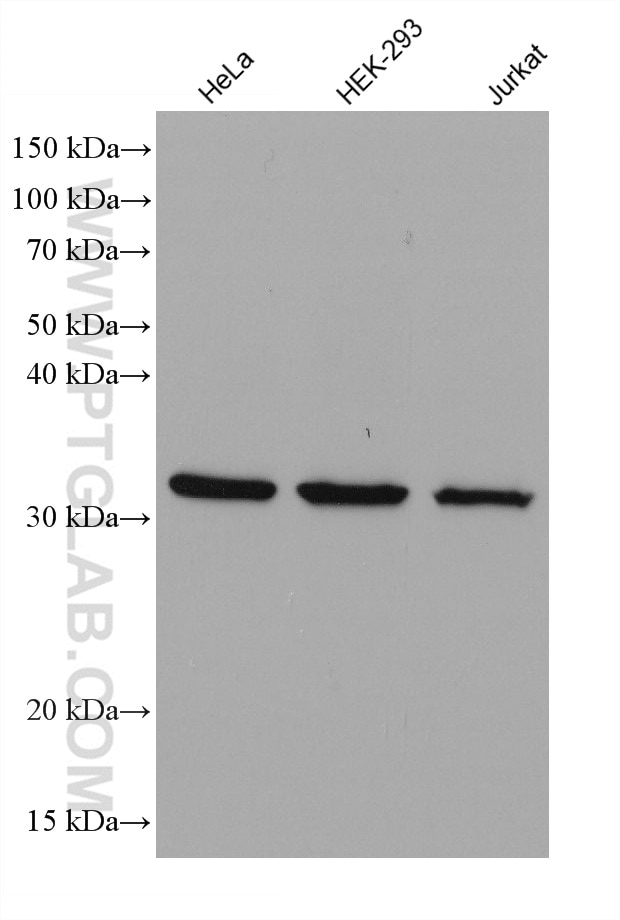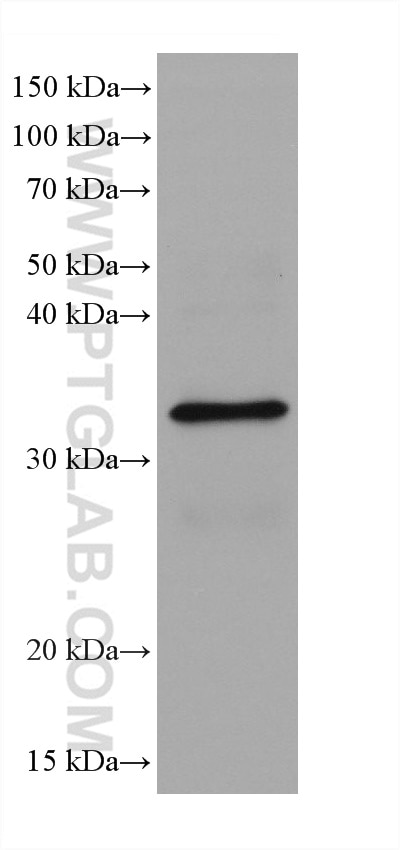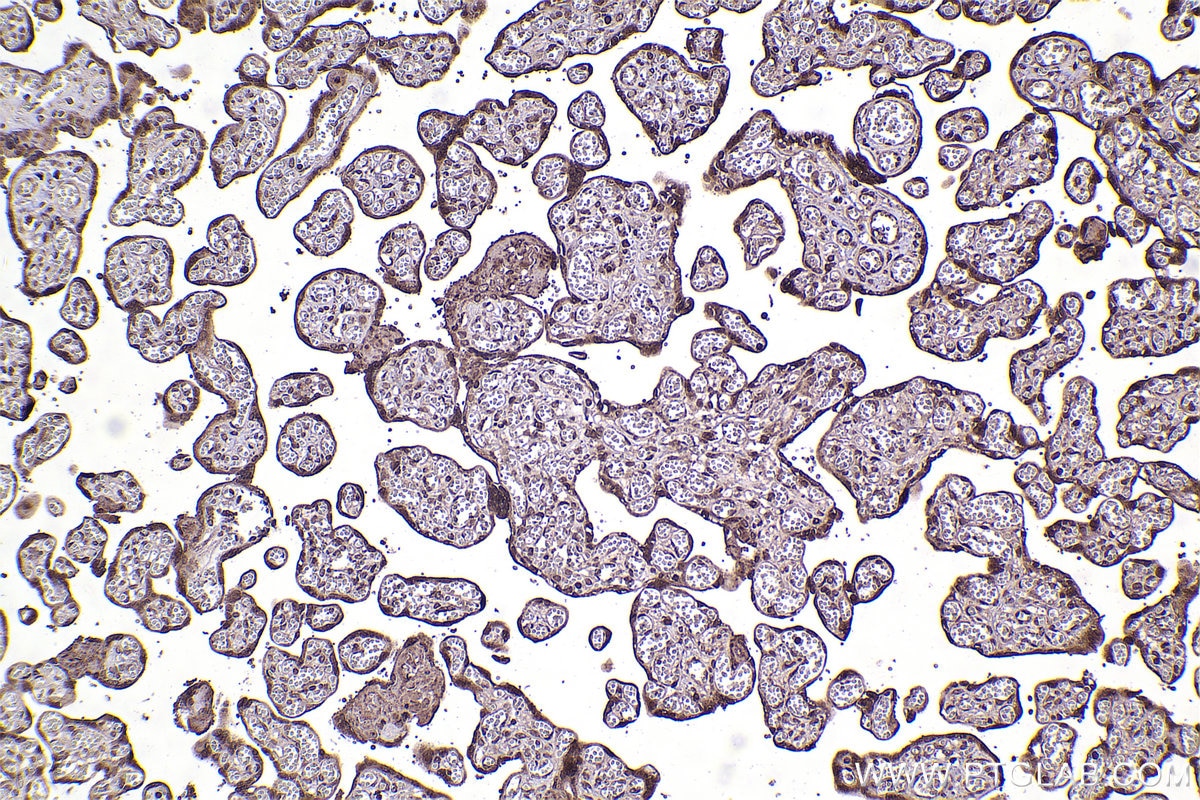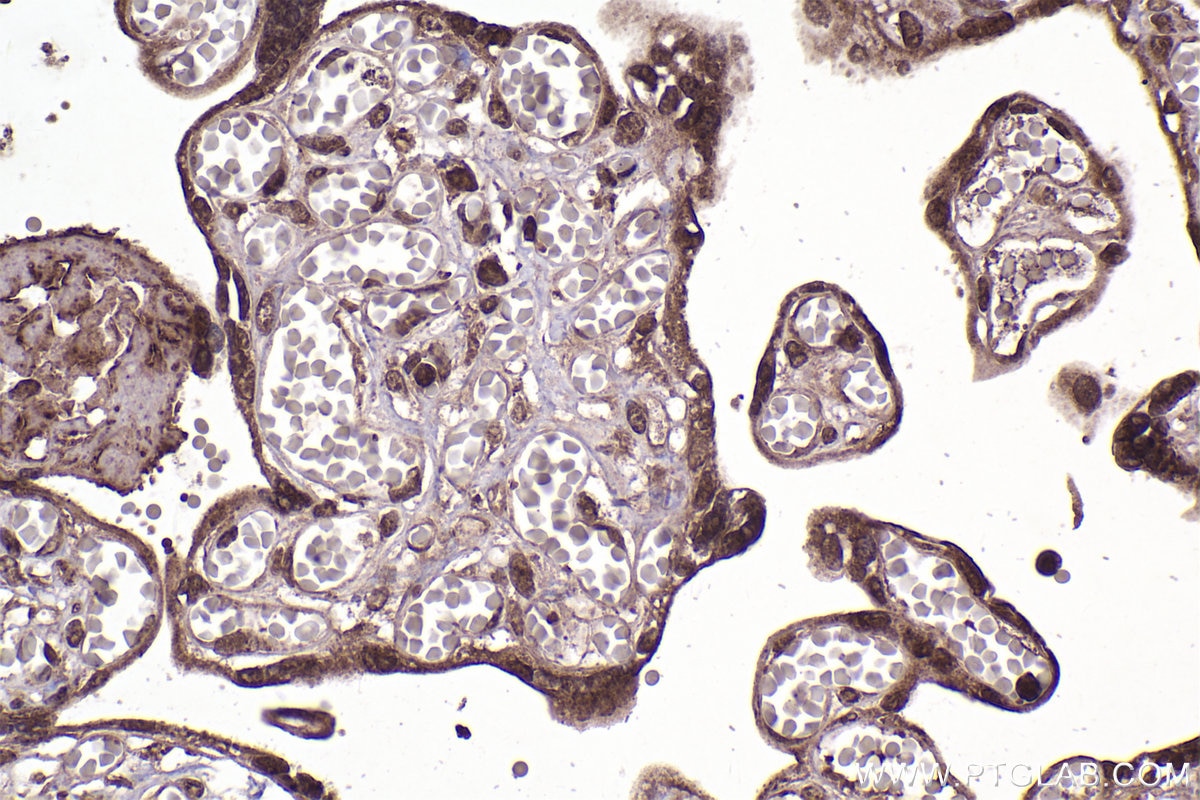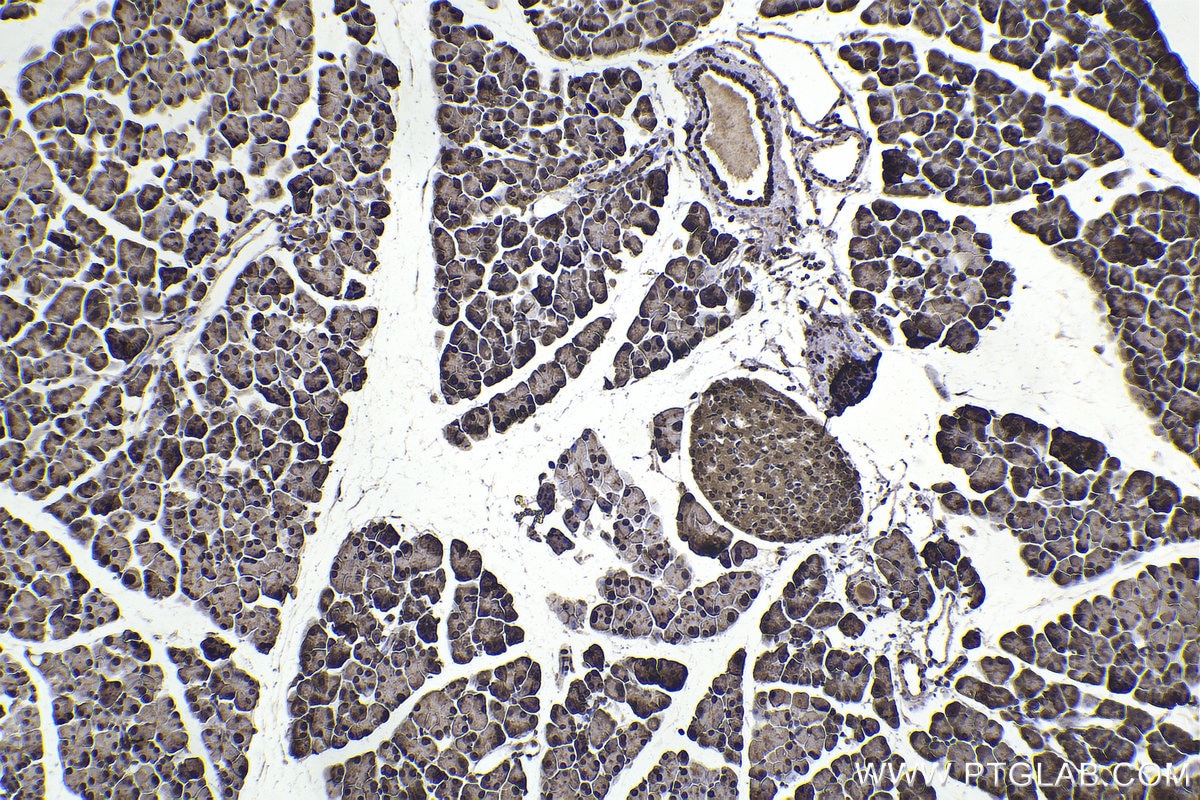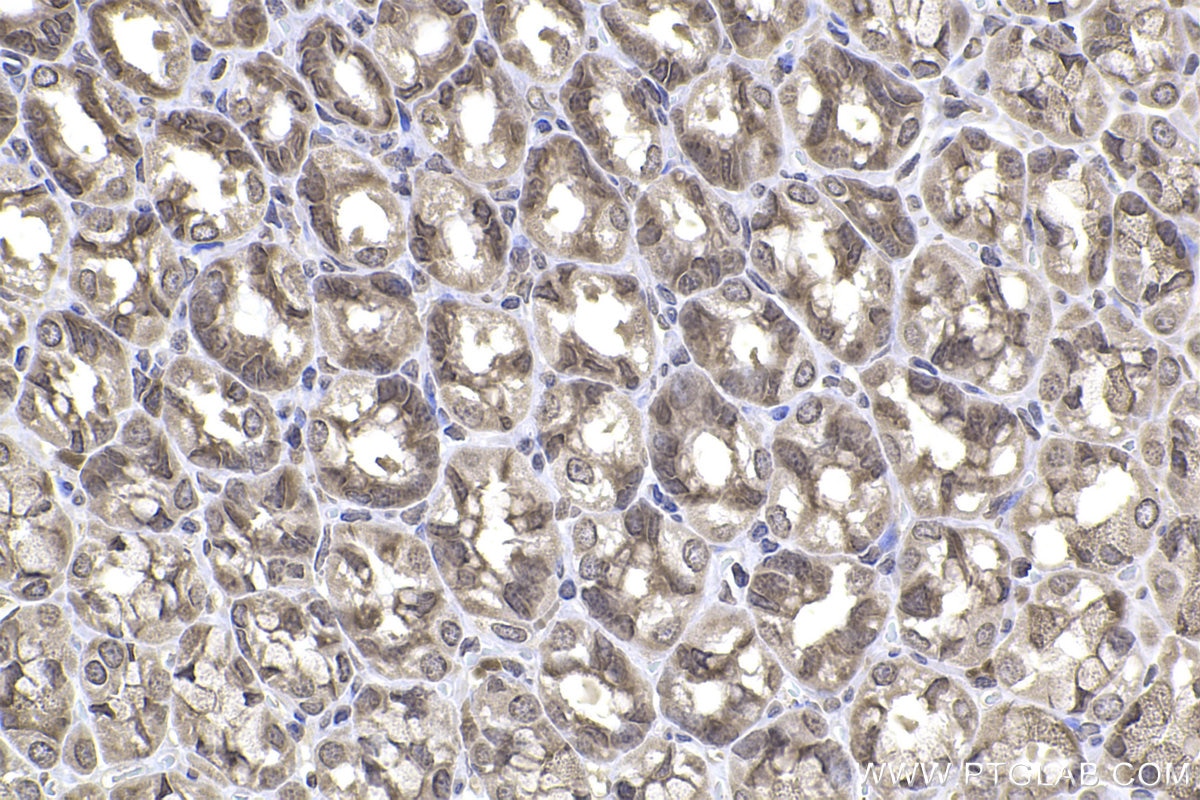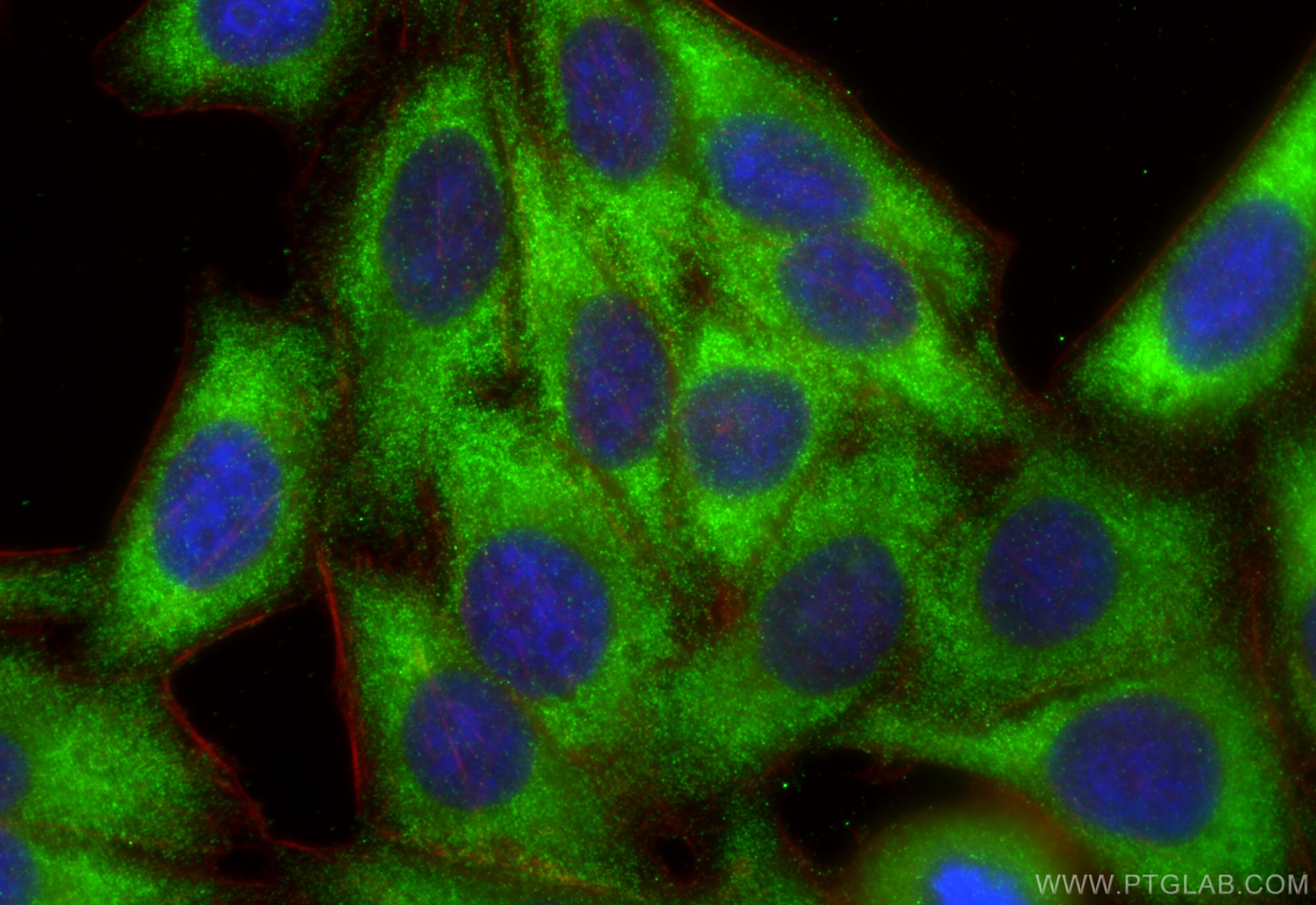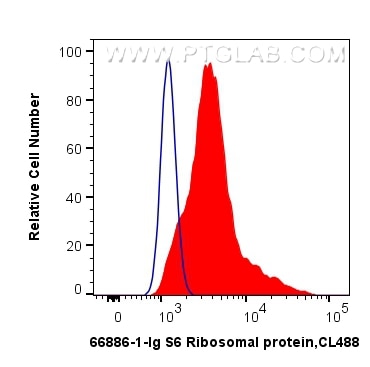Anticorps Monoclonal anti-S6 Ribosomal protein
S6 Ribosomal protein Monoclonal Antibody for WB, IHC, IF/ICC, FC (Intra), ELISA
Hôte / Isotype
Mouse / IgG2a
Réactivité testée
Humain, rat, souris et plus (1)
Applications
WB, IHC, IF/ICC, FC (Intra), ELISA
Conjugaison
Non conjugué
CloneNo.
1C3E10
N° de cat : 66886-1-Ig
Synonymes
Galerie de données de validation
Applications testées
| Résultats positifs en WB | cellules HeLa, cellules A431, cellules HEK-293, cellules HSC-T6, cellules Jurkat, cellules NIH/3T3, cellules RAW 264.7, tissu hépatique de rat |
| Résultats positifs en IHC | tissu placentaire humain, tissu d'estomac de rat, tissu pancréatique de souris il est suggéré de démasquer l'antigène avec un tampon de TE buffer pH 9.0; (*) À défaut, 'le démasquage de l'antigène peut être 'effectué avec un tampon citrate pH 6,0. |
| Résultats positifs en IF/ICC | cellules HepG2, |
| Résultats positifs en FC (Intra) | cellules HepG2, |
Dilution recommandée
| Application | Dilution |
|---|---|
| Western Blot (WB) | WB : 1:5000-1:50000 |
| Immunohistochimie (IHC) | IHC : 1:500-1:2000 |
| Immunofluorescence (IF)/ICC | IF/ICC : 1:200-1:800 |
| Flow Cytometry (FC) (INTRA) | FC (INTRA) : 0.40 ug per 10^6 cells in a 100 µl suspension |
| It is recommended that this reagent should be titrated in each testing system to obtain optimal results. | |
| Sample-dependent, check data in validation data gallery | |
Applications publiées
| WB | See 18 publications below |
| IF | See 1 publications below |
Informations sur le produit
66886-1-Ig cible S6 Ribosomal protein dans les applications de WB, IHC, IF/ICC, FC (Intra), ELISA et montre une réactivité avec des échantillons Humain, rat, souris
| Réactivité | Humain, rat, souris |
| Réactivité citée | rat, Humain, souris, Hamster |
| Hôte / Isotype | Mouse / IgG2a |
| Clonalité | Monoclonal |
| Type | Anticorps |
| Immunogène | S6 Ribosomal protein Protéine recombinante Ag6599 |
| Nom complet | ribosomal protein S6 |
| Masse moléculaire calculée | 29 kDa |
| Poids moléculaire observé | 29-32 kDa |
| Numéro d’acquisition GenBank | BC000524 |
| Symbole du gène | RPS6 |
| Identification du gène (NCBI) | 6194 |
| Conjugaison | Non conjugué |
| Forme | Liquide |
| Méthode de purification | Purification par protéine A |
| Tampon de stockage | PBS with 0.02% sodium azide and 50% glycerol |
| Conditions de stockage | Stocker à -20°C. Stable pendant un an après l'expédition. L'aliquotage n'est pas nécessaire pour le stockage à -20oC Les 20ul contiennent 0,1% de BSA. |
Informations générales
Ribosomal protein S6 (RPS6),Phosphoprotein NP33.It may play an important role in controlling cell growth and proliferation through the selective translation of particular classes of mRNA.Ribosomal protein S6 is the major substrate of protein kinases in eukaryote ribosomes. The phosphorylation is stimulated by growth factors, tumor promoting agents, and mitogens. It is dephosphorylated at growth arrest. Phosphorylated at Ser-235 and Ser-236 by RPS6KA1 and RPS6KA3; phosphorylation at these sites facilitates the assembly of the preinitiation complex.
Protocole
| Product Specific Protocols | |
|---|---|
| WB protocol for S6 Ribosomal protein antibody 66886-1-Ig | Download protocol |
| IHC protocol for S6 Ribosomal protein antibody 66886-1-Ig | Download protocol |
| IF protocol for S6 Ribosomal protein antibody 66886-1-Ig | Download protocol |
| Standard Protocols | |
|---|---|
| Click here to view our Standard Protocols |
Publications
| Species | Application | Title |
|---|---|---|
Genome Biol A post-transcriptional program of chemoresistance by AU-rich elements and TTP in quiescent leukemic cells. | ||
Transl Res Ribosomal proteins as distinct "passengers" of microvesicles: new semantics in myeloma and mesenchymal stem cells' communication. | ||
Cell Mol Life Sci Phosphocholine inhibits proliferation and reduces stemness of endometrial cancer cells by downregulating mTOR-c-Myc signaling | ||
Microbiol Spectr Structural Basis and Function of the N Terminus of SARS-CoV-2 Nonstructural Protein 1. | ||
Ecotoxicol Environ Saf Exposure to DEHP induces testis toxicity and injury through the ROS/mTOR/NLRP3 signaling pathway in immature rats. | ||
Sci Rep YB1 associates with oncogenetic roles and poor prognosis in nasopharyngeal carcinoma. |
Avis
The reviews below have been submitted by verified Proteintech customers who received an incentive for providing their feedback.
FH Morgane (Verified Customer) (09-15-2025) | Quite hard to detect on total protein extract, needs at least 50µg protein and longer exposure
 |
